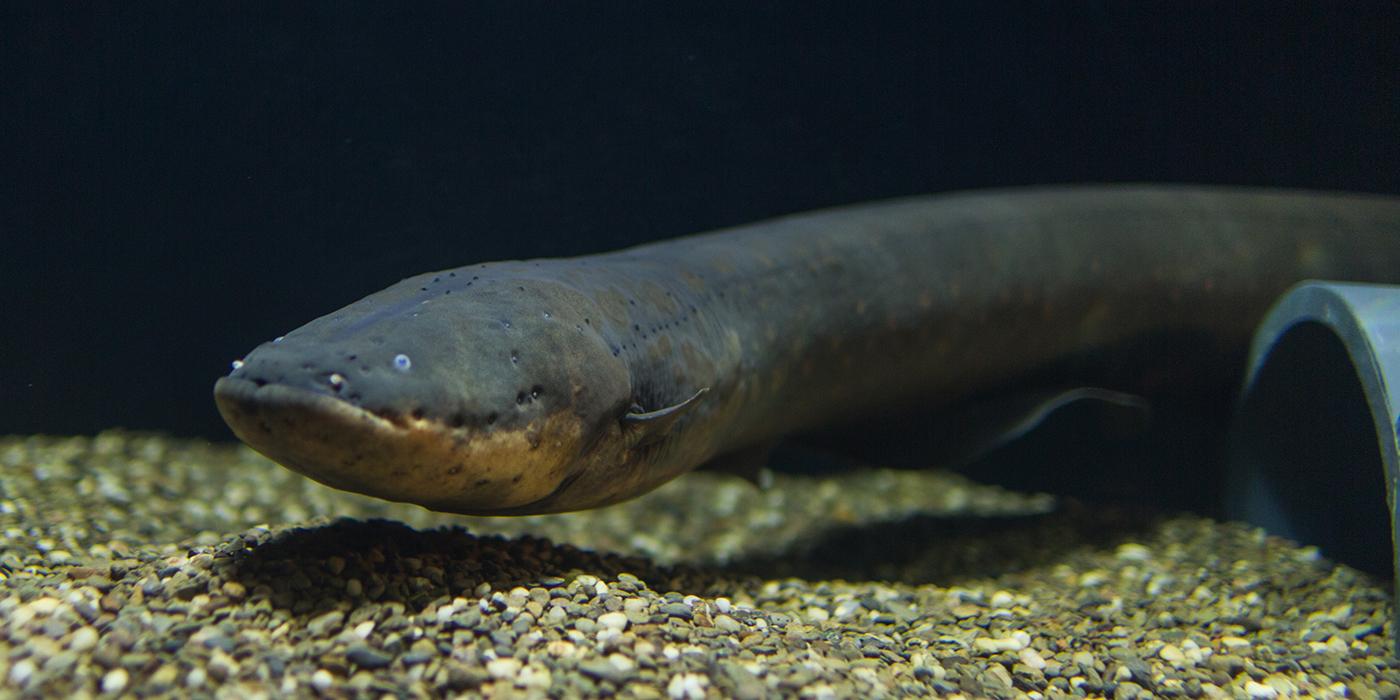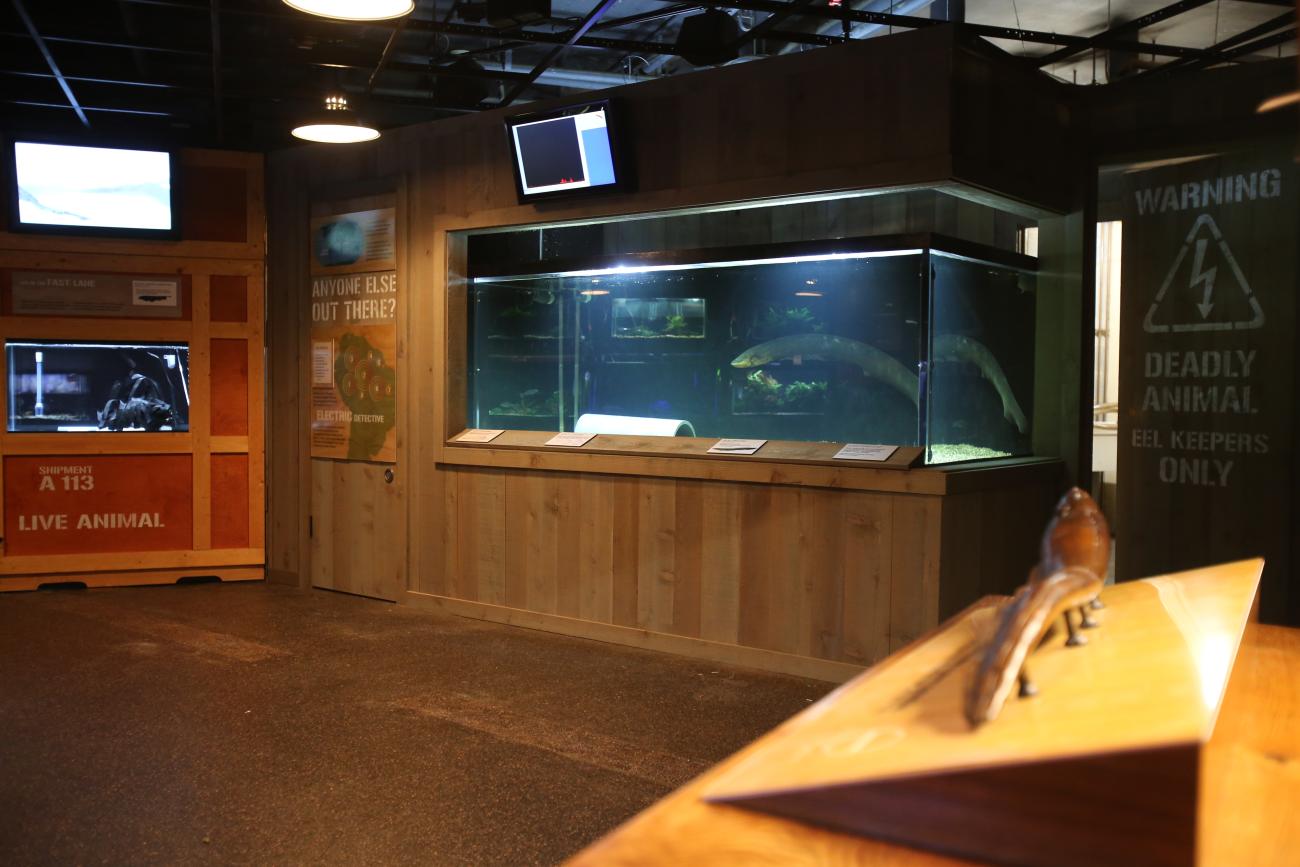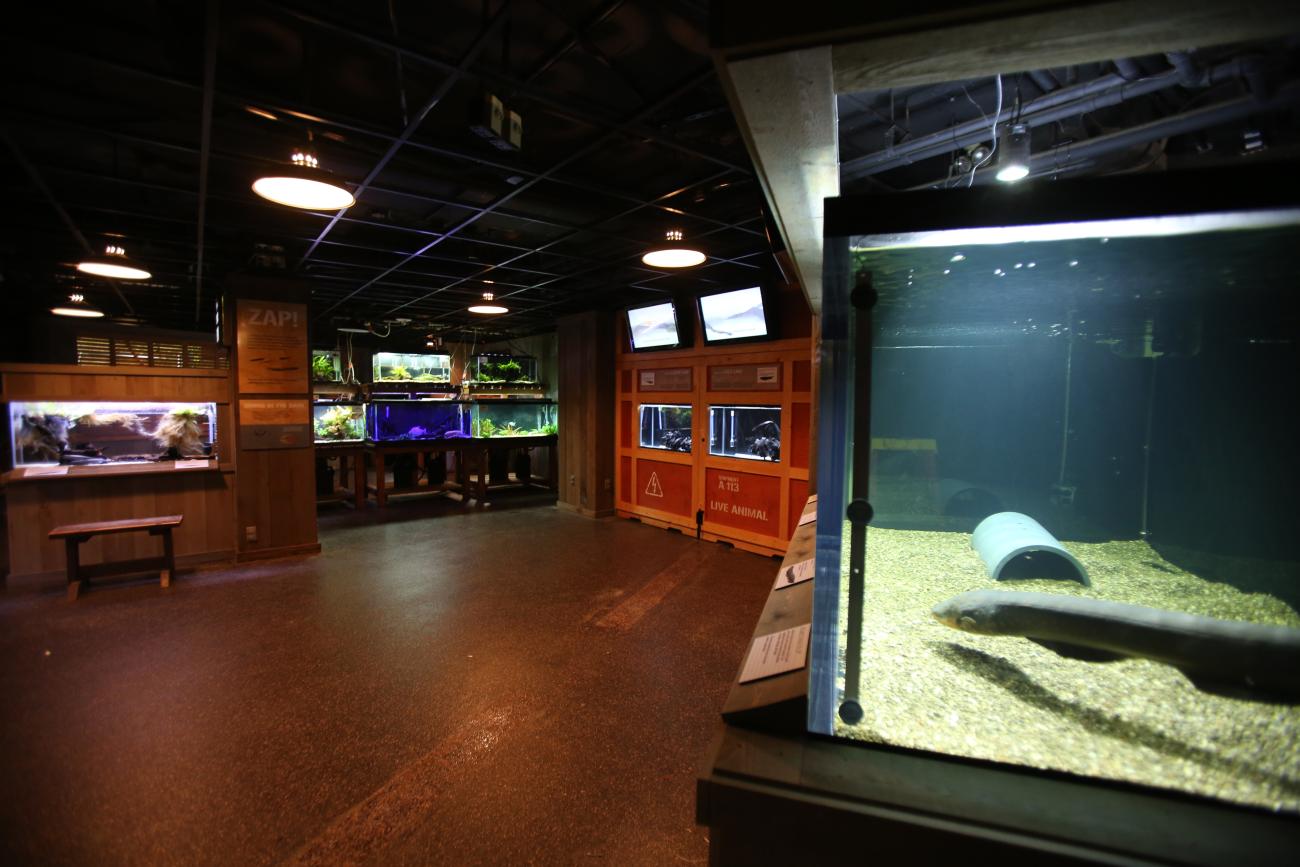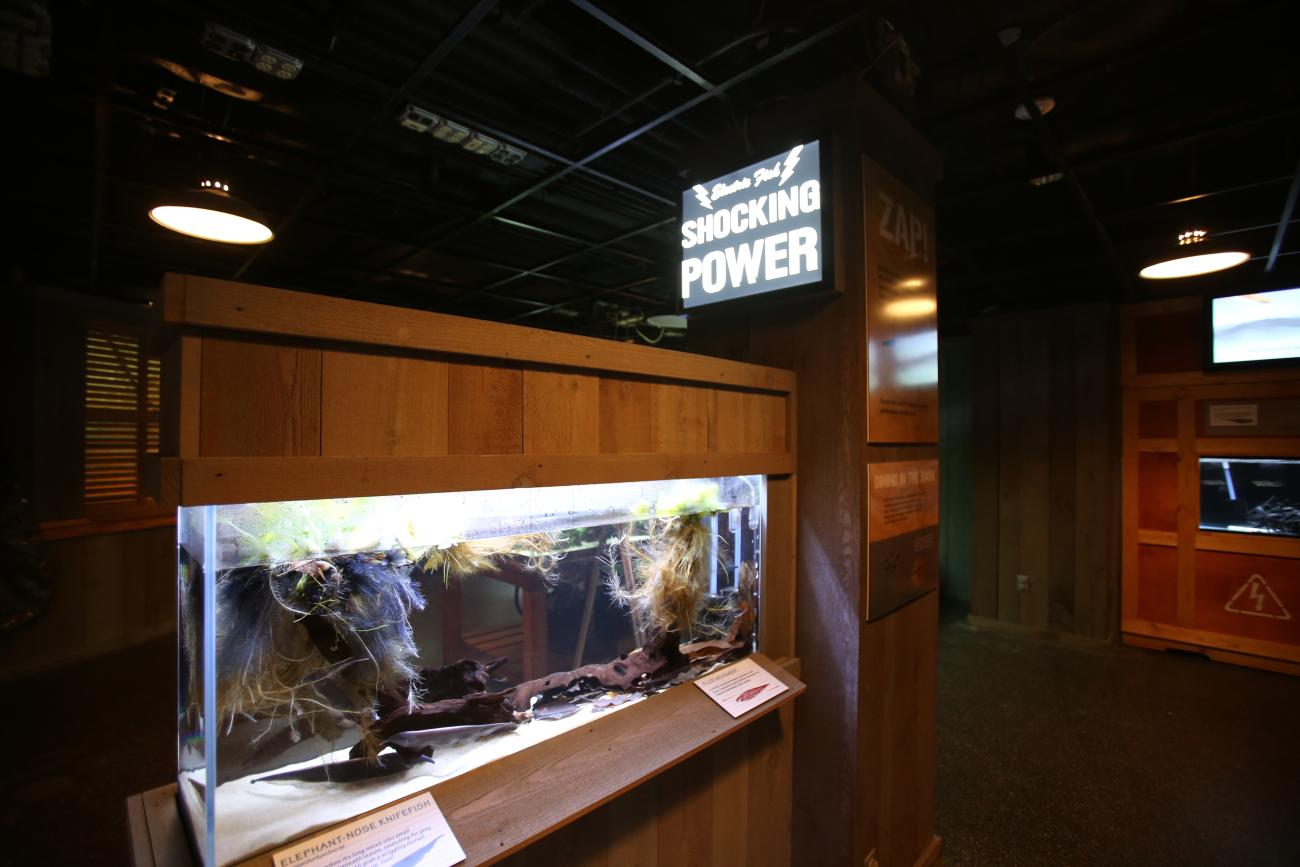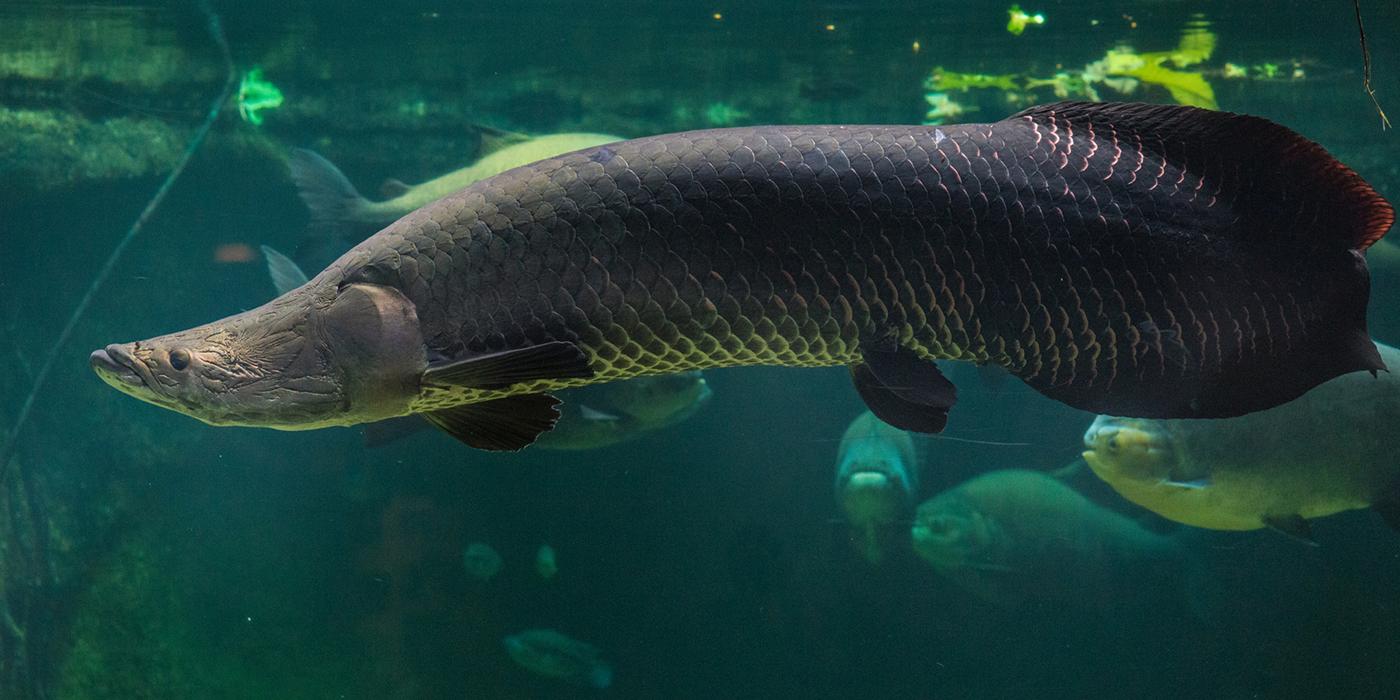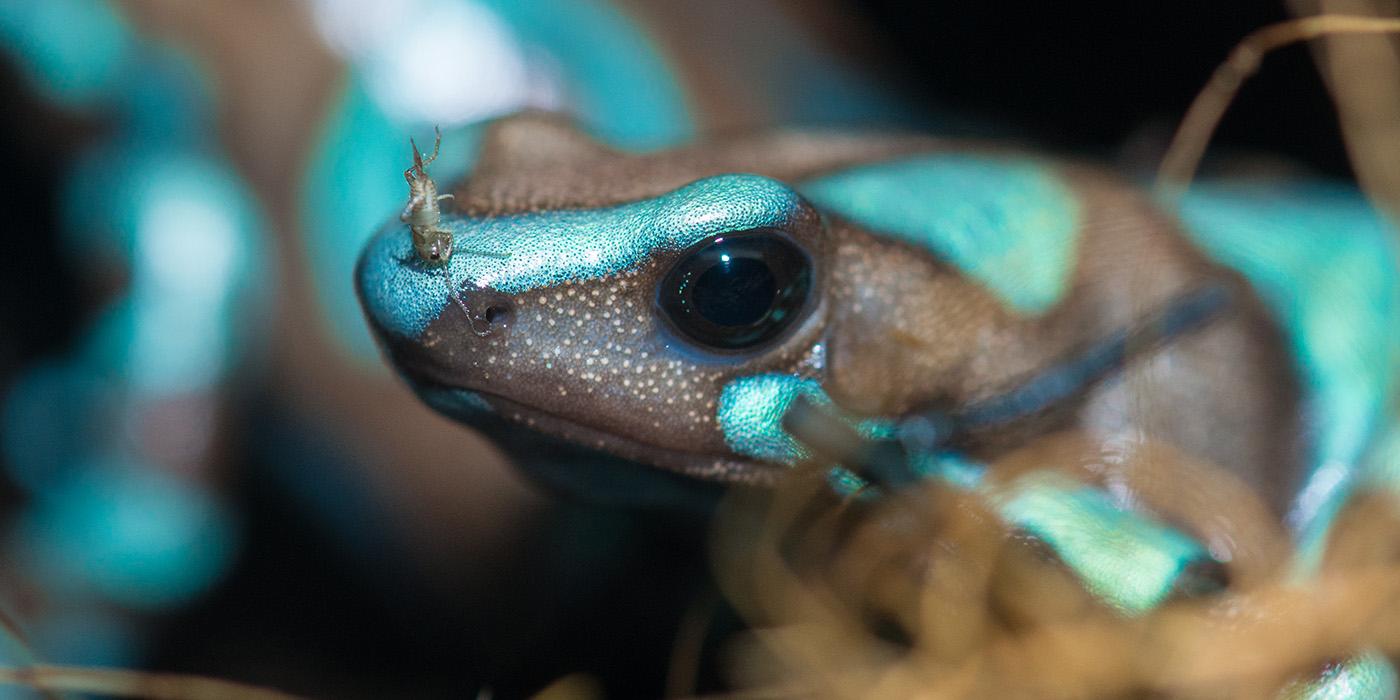It’s Electric (Fishes)!
Visitors seeking to inject a jolt of fun into their trip to the Smithsonian’s National Zoo need look no further than Amazonia’s Electric Fishes Demonstration Lab! The exhibit, which opened Oct. 6, features six species of fish that emit powerful charges, pulses and waves in order to navigate their habitats, communicate and stun prey. In this Q&A, animal keepers Denny Charlton and Hilary Colton talk about the magnetic personalities of the Zoo’s newest residents.
What are electric fishes claims to fame?
All of these fishes use an electric signal to detect information in their environment. The smaller species—Sierra knifefish, elephant-nosed knifefish, black ghost knifefish, banded knifefish and glass knifefish— produce pulse or wave signals that enable them to communicate and navigate. For example, the Sierra knifefish emits a pulse; it sends out a burst of signal that bounces back to them. It’s akin to the way dolphins use echolocation. The black ghost knifefish, on the other hand, emits wave signal, which is continuous and varies in strength and weakness.
Electric eels use both pulse and wave signals to navigate as well as stun and catch their prey. They have two organs that generate these pulses: the Sachs electric organ and Hunter’s electric organ. Both have stacked cells that produce power like a battery. The head of the eel has a positive charge, and the tail has a negative charge. They build up and save the charge, using it only for hunting or defense. It can take some time to build up the charge, but once they do, they can produce up to 600 volts of electricity—enough to stop a human heart! Electric eels of the genus Electrophorus generate the most powerful biological electric discharge in the natural world—up to 860 volts.
How do you care for the electric fishes?
When we arrive at work in the morning, the first thing we do is ensure the habitats’ life support systems are running smoothly. We examine the tanks, filters, lights and feeders.
Once we’ve done our routine checks, it’s feeding time. These fish are carnivorous, and most of them receive a mix of thawed shrimp and worms, which we disperse throughout the tank to encourage the animals to forage. The diet they receive here is similar to the diet they would eat in the wild (fish, shrimp, crustaceans and worms). The species of prey offered is different from what they would encounter in their natural habitat, but we work closely with our nutrition team to best approximate the types of prey, amounts and calories to ensure a balanced diet.
What’s the secret to feeding the electric eel?
There is a lot of preparation involved. Safety is our top priority, so two staff are on hand while feeding the eel. We also use protective equipment including gloves and nets made of rubber. The eel receives frozen-thawed fish and shrimp as well as live earthworms, which we either toss into its habitat or present to it on a plastic feeding stick.
What’s the best time to see the fishes?
Stop by and visit the lab anytime while Amazonia is open (10 a.m. to 4 p.m.). To see a demonstration, check out the daily programs schedule on our website. We will be updating our animal encounters and keeper talks soon. We hope to see you there!
This story appears in the October 2017 issue of National Zoo News. Learn more about the electric fishes demonstration lab here.Related Species:

